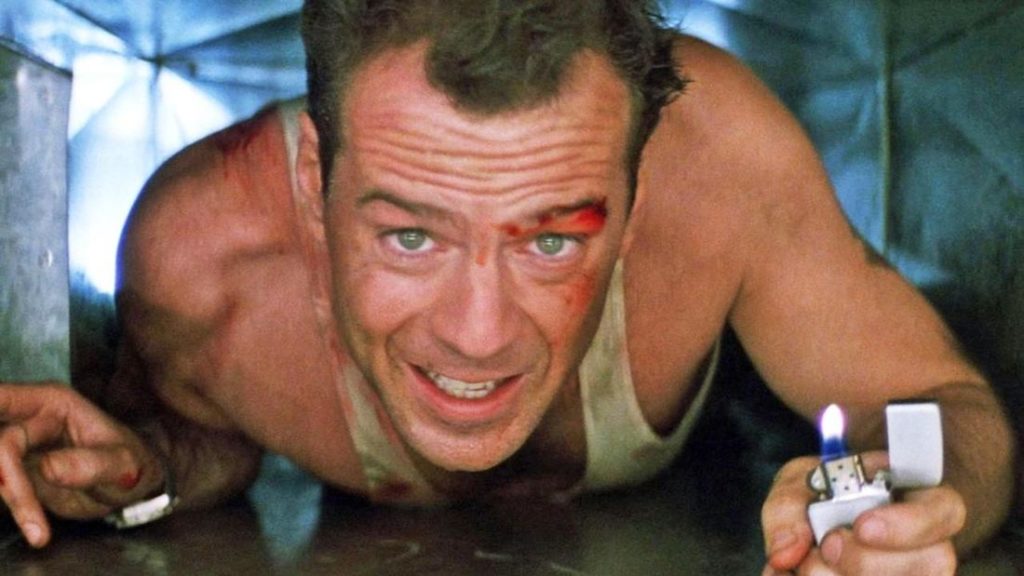By Karl Williams · September 6, 2023

It’s one of the most fundamental elements of a movie or TV show: the plot. Most of us have an idea of what a plot is: it’s the story, right? Not so fast. A “story” has a lot of other elements that are not part of the plot, such as themes and character arcs. So, what is plot?
Let’s go over some definitions, look at some examples, and figure out how to tackle your own story’s plot.
Plot is what literally happens in a story — the sequence of events that unfold depicting what’s happening for an audience.
Where a story is just the basic facts (Who is the protagonist, What is happening to them and Who/When (the time and place — its setting), Plot gets a bit more into the details with How does all this go down, and Why is it happening?
Story: Very broad, 360-view of the bare-bones basics.
Plot: Still focused on the literal sequence of events, but a lot more details.
It’s pretty easy to understand, but what isn’t… is how to create a plot. Story’s the easy stuff — it’s pretty much just a logline. Plot is where the rubber meets the road, story-wise. It’s where you have to start building the script.
Read More: Seth Rogen on the Difference Between Plot and Story
Let’s go over how to construct a plot for your screenplay, as well as the hurdles you’ll have to jump over to get it done.

Mark Twain may or may not have famously said, “Life is just one damn thing after another.” In this sense, plots are like life. They’re also just one damn thing after another.
What those things are, and the order they go in, is the rub.
Some screenwriters like their stories told in a very logical, sequential chronological order. Others, like Quentin Tarantino, like to take their stories’ events and shuffle them up like cards in a deck.
Some even use the repeating-day structure of Groundhog Day and Russian Doll, and I was dazzled by the way Greta Gerwig grafted together the character of Jo in the novel Little Women with the real life of Louisa May Alcott.
In all of these films and TV shows, the plot is a series of (fortunate or otherwise — sorry Lemony Snicket) events that occur involving the protagonist.
It’s as simple (and as complicated) as that. Plot is just what happens and how it happens. While many seek the golden formula that will magically guarantee that all of their plots are good, such a screenwriting holy grail does not exist.
There is one way to ensure that your plot, quality aside, at least functions, makes sense, and moves your story forward from one event to the other…

Each event that occurs in your plot should be both Cause and Effect. The event is an effect that was caused by some event that happened before it; in turn, this new event causes or leads to the next event, its effect, in a series of (hopefully escalating!) causes and events.
When those causes and effects are logical, your plot will generally tend to make sense. When they’re not… well, maybe you’re the new David Lynch and you’re making the next Blue Velvet. (Although to be fair, Blue Velvet makes more sense than it seems like it does — after 5 viewings — but for sure, some stuff just happens because the filmmaker thought it was cool, and he was right.)
To understand how to use cause and effect well, probably the best genre to study is action movies. When they’re written well, action flicks by necessity wear their causes and effects on their sleeves, so they’re easy to map. A few master classes in effective causes and effects: Die Hard, Midnight Run and The Fugitive.
Let’s use Die Hard as an example, Here are the causes and effects that lead to each other in one sequence early in the movie:

‘Die Hard’ (1988)
You get the idea. Each cause has an effect that leads to the next cause, and so on. Do you see how each successive round of causes and effects gets bigger, more urgent and raises the stakes? That’s good plotting!
Read More: The Script Lab’s “5 Plot Point Breakdown” Series
Now that you’ve got those totally logical, rock-solid causes and effects lined up, another major method to keep your plot in fine fettle is the Element of Surprise.
In every scene, tweak the reader/audience’s expectations a little. Lead them toward the barn then suddenly take them into the pasture; set them up to expect something then deliver something just a little bit different.
In the same way that causes and effects need to be logical, surprises have a need too: They need to be believable. It’s easy to just throw a huge, unexpected twist into the mix that sets an audience’s brains on fire — but does it make sense? Is it authentic? WILL WE BELIEVE IT?
If it can check those boxes, there’s nothing better than a movie, act, sequence or scene taking us to a slightly different, but *believable* destination.
Read More: Spoiler Alert! Why Our Brains Love Plot Twists

Some writers claim that they just sit and write and a fully formed story spills onto the page as they breathe in the ether of some mystical muse, a plot just organizing itself onto the page as they breathlessly anticipate a check, a greenlight, a Pulitzer Prize.
Sure, Jan.
I’m not here to call anybody a liar. That’s not how I roll. But I also don’t believe it works like that for anybody, not for a minute.
This is my preamble to saying: Go ahead and visually map out that plot. Whether you’re using Acts, Sequences, feline rescue methodology, Hero’s Journey / Monomyth, it’s all the same to me — just do it. Knock yourself out with the 3×5 cards or the dry-erase boards.
Despite dubious claims otherwise, the pros all do it. Take a look at any photo ever snapped inside a TV show writers’ room. The walls are covered with notes as they work out the season.
You’ll need to do this too. You’ll be glad you did when you’re on page 60 and your plot gets lost in the weeds. Not that that ever happens to ME, mind you (mumble mumble cough).
Read More: How SOUTH PARK Creators Plot Better Scripts
It happens at least once a year in at least one of my classes. An ambitious, bright, creative and courageous student declares they’re going to write a plotless script. They don’t want to be held back by the Man and his “rules.” They’re going to create something NEW. Something we’ve never seen before!
I applaud the guts this takes. Cortez burning his ships. And maybe, someday, I’ll discover a latent Eisenstein or Welles in my class — someone who explodes all the guardrails in writing a masterpiece.
It’s just never happened yet. Actually, none of them have ever finished the script they were working on. But hey, you just might be the one! Go for it! There have been plenty of filmmakers and screenwriters who have successfully broken these rules.
For the rest of us, get those 3×5 index cards and a Sharpie out. And in all sincerity: good luck with your script!
Read More: 15 Simple Screenplay Rules You Need to Know
—
Karl Williams is a screenwriting instructor at Scottsdale Community College in Arizona, blogs about screenwriting, and co-hosts the screenwriting advice podcast Get Your Story Straight.